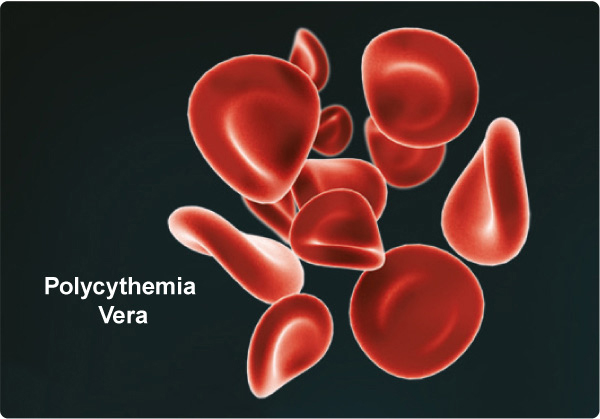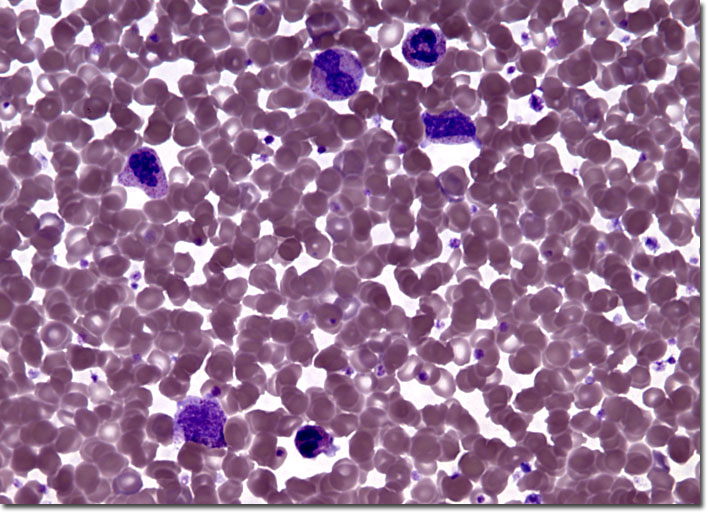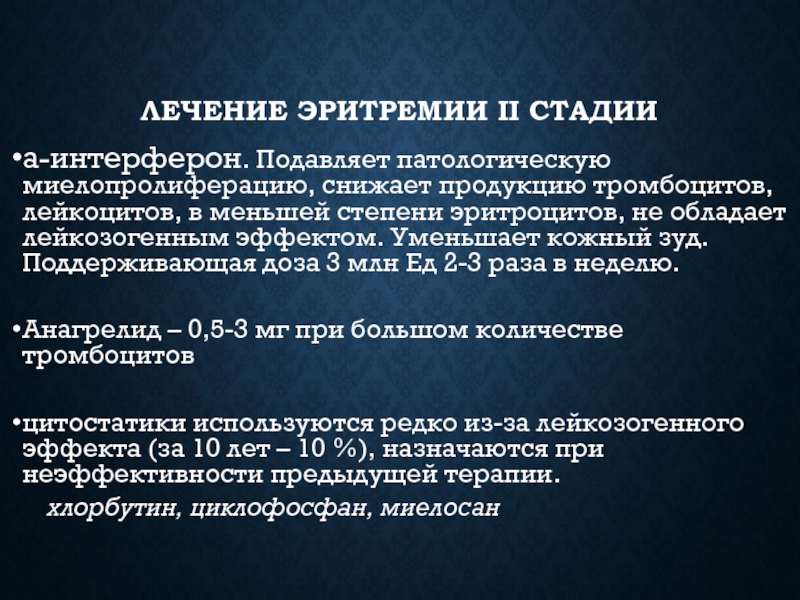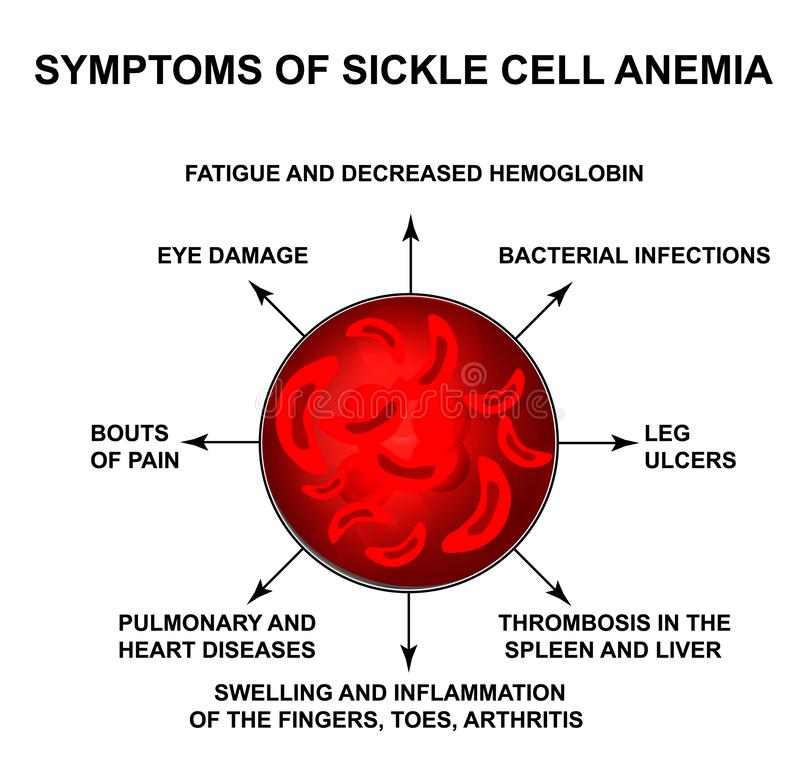High red blood cells symptoms. Polycythemia Vera: Symptoms, Causes, and Complications of High Red Blood Cell Count
What are the symptoms of polycythemia vera. How is polycythemia vera diagnosed. What causes polycythemia vera. What are the potential complications of untreated polycythemia vera. Who is at risk for developing polycythemia vera. How is polycythemia vera treated. What is the prognosis for patients with polycythemia vera.
Understanding Polycythemia Vera: A Rare Blood Cancer
Polycythemia vera (PV) is an uncommon form of blood cancer that affects the bone marrow’s ability to produce blood cells. This condition results in an overproduction of red blood cells, leading to thickened blood and impaired blood flow. While rare, PV can have serious consequences if left untreated, including an increased risk of blood clots and other complications.
The slow progression of polycythemia vera often means that individuals may have the condition for years before receiving a diagnosis. In many cases, the disease is discovered incidentally during routine blood tests performed for unrelated reasons.

What exactly happens in polycythemia vera?
In polycythemia vera, a genetic mutation disrupts the normal regulation of blood cell production. While the body typically maintains a balance of red blood cells, white blood cells, and platelets, PV causes an overproduction of these cells, particularly red blood cells. This excess leads to a thickening of the blood, which can impede normal circulation and increase the risk of various health issues.
Recognizing the Symptoms of Polycythemia Vera
Identifying polycythemia vera can be challenging, as many individuals with the condition may not experience noticeable symptoms, especially in the early stages. However, some people may develop a range of symptoms that can vary in severity and specificity.
What are the common symptoms of polycythemia vera?
- Headaches
- Dizziness
- Fatigue
- Blurred vision
- Itchiness, particularly after warm baths or showers
- Numbness, tingling, or weakness in extremities
- Feeling of fullness or bloating after eating
- Abdominal pain, often in the left upper quadrant
- Unusual bleeding, such as nosebleeds or bleeding gums
- Painful joint swelling, commonly affecting the big toe
- Shortness of breath, especially when lying down
It’s important to note that these symptoms can be associated with various other conditions. Therefore, if you experience any of these symptoms persistently, it’s crucial to consult a healthcare professional for proper evaluation and diagnosis.

Causes and Risk Factors of Polycythemia Vera
The exact cause of polycythemia vera remains unknown, but researchers have identified certain factors that may contribute to its development.
What causes polycythemia vera?
Polycythemia vera occurs due to a mutation in genes responsible for blood cell production. This mutation is typically acquired during a person’s lifetime and is not inherited from parents. The most common mutation associated with PV is in the JAK2 gene, which plays a crucial role in regulating blood cell production.
Who is at risk for developing polycythemia vera?
While polycythemia vera can affect individuals of any age, certain factors may increase the likelihood of developing the condition:
- Age: PV is more common in adults between 50 and 75 years old
- Gender: Men are slightly more likely to develop PV than women
- Ethnicity: PV is more prevalent in certain ethnic groups, though it can affect people of all backgrounds
It’s worth noting that while women are less likely to develop PV, they tend to be diagnosed at younger ages compared to men.

Diagnosing Polycythemia Vera
Diagnosing polycythemia vera often involves a combination of medical history assessment, physical examination, and laboratory tests.
How is polycythemia vera diagnosed?
- Blood tests: A complete blood count (CBC) can reveal elevated levels of red blood cells, white blood cells, and platelets.
- Genetic testing: Checking for the JAK2 mutation can help confirm the diagnosis.
- Bone marrow biopsy: This procedure can provide additional information about blood cell production and rule out other conditions.
- Erythropoietin level test: Low levels of this hormone can indicate PV, as opposed to secondary polycythemia.
Early diagnosis is crucial for managing polycythemia vera effectively and preventing potential complications. If you experience symptoms or have concerns about PV, consult your healthcare provider for appropriate evaluation and testing.
Potential Complications of Untreated Polycythemia Vera
Without proper management, polycythemia vera can lead to several serious complications that can significantly impact a person’s health and quality of life.

What are the risks associated with untreated polycythemia vera?
- Blood clots: The increased blood thickness and abnormalities in platelets elevate the risk of clot formation, potentially leading to stroke, heart attack, or blockages in arteries and veins.
- Enlarged spleen: The spleen may become enlarged (splenomegaly) due to its increased workload in filtering the excess blood cells.
- Peptic ulcers: High levels of red blood cells can contribute to the development of open sores in the stomach, small intestine, or esophagus.
- Gout: Inflammation in joints, particularly the big toe, can occur due to elevated uric acid levels associated with increased cell turnover.
- Progression to other blood disorders: In rare cases, PV may evolve into more severe conditions such as myelofibrosis, myelodysplastic syndrome, or acute leukemia.
Understanding these potential complications underscores the importance of early diagnosis and proper management of polycythemia vera.
Treatment Approaches for Polycythemia Vera
While there is no cure for polycythemia vera, various treatment options are available to manage symptoms, reduce complications, and improve quality of life.

What are the main treatment strategies for polycythemia vera?
- Phlebotomy: Regular blood removal to reduce red blood cell count and blood volume
- Medications:
- Hydroxyurea: To suppress bone marrow production of blood cells
- Interferon alfa: To regulate blood cell production
- Ruxolitinib: A JAK inhibitor for cases resistant to other treatments
- Aspirin: Low-dose aspirin to reduce the risk of blood clots
- Radiation therapy: In some cases, to suppress overactive bone marrow
- Lifestyle modifications: Including maintaining proper hydration, avoiding extreme temperatures, and managing cardiovascular risk factors
Treatment plans are typically individualized based on factors such as age, overall health, severity of symptoms, and risk of complications. Regular monitoring and follow-up care are essential components of managing polycythemia vera effectively.
Living with Polycythemia Vera: Lifestyle Considerations
While medical treatment is crucial in managing polycythemia vera, certain lifestyle adjustments can help individuals cope with the condition and minimize its impact on daily life.

How can patients with polycythemia vera improve their quality of life?
- Stay hydrated: Drinking plenty of water helps maintain proper blood flow and reduces the risk of clots.
- Exercise regularly: Moderate physical activity can improve circulation and overall health.
- Avoid extreme temperatures: Both very hot and very cold environments can affect blood flow and exacerbate symptoms.
- Quit smoking: Smoking increases the risk of blood clots and other cardiovascular complications.
- Manage stress: Stress reduction techniques like meditation or yoga can be beneficial.
- Follow a balanced diet: A healthy diet can help manage weight and reduce cardiovascular risk factors.
- Be vigilant about symptoms: Report any new or worsening symptoms to your healthcare provider promptly.
By incorporating these lifestyle changes and working closely with their healthcare team, individuals with polycythemia vera can often lead fulfilling lives while effectively managing their condition.
Prognosis and Long-term Outlook for Polycythemia Vera Patients
Understanding the long-term outlook for individuals diagnosed with polycythemia vera is crucial for patients and their families. While PV is a chronic condition, advancements in treatment and management strategies have significantly improved outcomes for many patients.

What is the typical prognosis for someone with polycythemia vera?
The prognosis for polycythemia vera varies depending on several factors, including:
- Age at diagnosis
- Overall health status
- Presence of other medical conditions
- Response to treatment
- Adherence to treatment plans and follow-up care
With proper management, many individuals with PV can expect to have a near-normal life expectancy. However, the condition does require ongoing monitoring and treatment to prevent complications and maintain quality of life.
How does polycythemia vera affect life expectancy?
While polycythemia vera can potentially impact life expectancy, especially if left untreated or poorly managed, modern treatments have significantly improved outcomes. Studies have shown that patients who receive appropriate care and follow their treatment plans closely can often achieve life expectancies similar to those of the general population.
It’s important to note that the progression of PV can vary from person to person. Some individuals may experience a relatively stable course of the disease, while others may face more challenges or develop complications over time.

Advances in Polycythemia Vera Research and Treatment
The field of hematology-oncology continues to make strides in understanding and treating polycythemia vera. Ongoing research aims to improve diagnostic methods, develop more targeted therapies, and enhance overall patient care.
What are some recent developments in polycythemia vera research?
- Improved genetic testing: More precise genetic markers are being identified to aid in diagnosis and prognosis.
- Novel therapeutic agents: Researchers are exploring new drugs that target specific pathways involved in PV pathogenesis.
- Personalized medicine approaches: Tailoring treatments based on individual genetic profiles and disease characteristics.
- Combination therapies: Investigating the efficacy of combining different treatment modalities for better outcomes.
- Quality of life studies: Focusing on improving symptom management and overall well-being for PV patients.
These advancements offer hope for more effective treatments and improved quality of life for individuals living with polycythemia vera.

Support and Resources for Polycythemia Vera Patients
Living with a chronic condition like polycythemia vera can be challenging, but various support systems and resources are available to help patients and their families navigate the journey.
Where can patients find support and information about polycythemia vera?
- Medical professionals: Hematologists and oncologists specializing in blood disorders
- Patient support groups: Both in-person and online communities for sharing experiences and advice
- Educational resources: Reputable websites, publications, and webinars from medical institutions and organizations
- Clinical trials: Opportunities to participate in research studies for new treatments
- Financial assistance programs: Help with treatment costs and related expenses
- Mental health services: Counseling and therapy to address the emotional aspects of living with a chronic condition
Engaging with these resources can provide valuable information, emotional support, and practical assistance for individuals affected by polycythemia vera.

The Importance of Regular Monitoring and Follow-up Care
Proper management of polycythemia vera requires ongoing monitoring and regular follow-up care. This approach allows healthcare providers to track the progression of the disease, adjust treatments as needed, and catch any potential complications early.
What does routine care for polycythemia vera typically involve?
- Regular blood tests: To monitor blood cell counts and other relevant markers
- Physical examinations: To check for signs of disease progression or complications
- Imaging studies: Periodic scans to assess organ health, particularly the spleen
- Medication reviews: Evaluating the effectiveness of current treatments and making adjustments as necessary
- Cardiovascular risk assessments: Monitoring and managing factors that could increase the risk of blood clots
- Bone marrow biopsies: Occasionally performed to assess the status of the bone marrow
The frequency of these check-ups and tests may vary depending on individual circumstances and disease stability. Patients should work closely with their healthcare team to establish an appropriate monitoring schedule.

Why is consistent follow-up care crucial for polycythemia vera patients?
- Early detection of complications: Regular monitoring can identify potential issues before they become severe.
- Treatment optimization: Allows for timely adjustments to the treatment plan based on the patient’s response and changing needs.
- Disease progression tracking: Helps healthcare providers understand how the condition is evolving over time.
- Quality of life improvement: Addressing symptoms and concerns promptly can enhance overall well-being.
- Prevention of long-term complications: Consistent care can reduce the risk of serious health issues associated with PV.
By prioritizing regular follow-up care, individuals with polycythemia vera can take an active role in managing their condition and maintaining their health over the long term.
Polycythemia Vera in Special Populations
While polycythemia vera can affect individuals of all ages and backgrounds, certain populations may face unique challenges or considerations in managing the condition.

How does polycythemia vera affect different age groups?
Polycythemia vera can manifest differently across age groups:
- Young adults: May face concerns about fertility and family planning
- Middle-aged individuals: Often need to balance treatment with work and family responsibilities
- Older adults: May have more comorbidities and require careful management of multiple health conditions
What special considerations exist for pregnant women with polycythemia vera?
Pregnancy in women with polycythemia vera requires careful planning and monitoring:
- Pre-conception counseling is essential to assess risks and optimize treatment
- Some medications may need to be adjusted or discontinued during pregnancy
- Close collaboration between hematologists and obstetricians is crucial for managing both the mother’s health and fetal development
- There may be an increased risk of complications such as miscarriage or blood clots, necessitating vigilant monitoring throughout pregnancy and postpartum
By addressing the specific needs of different patient populations, healthcare providers can offer more personalized and effective care for individuals living with polycythemia vera.

Polycythemia vera – Symptoms & causes
Overview
Polycythemia vera (pol-e-sy-THEE-me-uh VEER-uh) is a type of blood cancer. It causes your bone marrow to make too many red blood cells. These excess cells thicken your blood, slowing its flow, which may cause serious problems, such as blood clots.
Polycythemia vera is rare. It usually develops slowly, and you might have it for years without knowing. Often the condition is found during a blood test done for another reason.
Without treatment, polycythemia vera can be life-threatening. But proper medical care can help ease signs, symptoms and complications of this disease.
Products & Services
Symptoms
Many people with polycythemia vera don’t have noticeable signs or symptoms. Some people might develop vague symptoms such as headache, dizziness, fatigue and blurred vision.
More-specific symptoms of polycythemia vera include:
- Itchiness, especially after a warm bath or shower
- Numbness, tingling, burning, or weakness in your hands, feet, arms or legs
- A feeling of fullness soon after eating and bloating or pain in your left upper abdomen due to an enlarged spleen
- Unusual bleeding, such as a nosebleed or bleeding gums
- Painful swelling of one joint, often the big toe
- Shortness of breath and difficulty breathing when lying down
When to see a doctor
Make an appointment with your doctor if you have signs or symptoms of polycythemia vera.
Causes
Polycythemia vera occurs when a mutation in a gene causes a problem with blood cell production. Normally, your body regulates the number of each of the three types of blood cells you have — red blood cells, white blood cells and platelets. But in polycythemia vera, your bone marrow makes too many of some of these blood cells.
The cause of the gene mutation in polycythemia vera is unknown, but it’s generally not inherited from your parents.
Risk factors
Polycythemia vera can occur at any age, but it’s more common in adults between 50 and 75. Men are more likely to get polycythemia vera, but women tend to get the disease at younger ages.
Complications
Possible complications of polycythemia vera include:
- Blood clots. Increased blood thickness and decreased blood flow, as well as abnormalities in your platelets, raise your risk of blood clots. Blood clots can cause a stroke, a heart attack, or a blockage in an artery in your lungs or a vein deep within a leg muscle or in the abdomen.

- Enlarged spleen. Your spleen helps your body fight infection and filter unwanted material, such as old or damaged blood cells. The increased number of blood cells caused by polycythemia vera makes your spleen work harder than normal, which causes it to enlarge.
- Problems due to high levels of red blood cells. Too many red blood cells can lead to a number of other complications, including open sores on the inside lining of your stomach, upper small intestine or esophagus (peptic ulcers) and inflammation in your joints (gout).
- Other blood disorders. In rare cases, polycythemia vera can lead to other blood diseases, including a progressive disorder in which bone marrow is replaced with scar tissue, a condition in which stem cells don’t mature or function properly, or cancer of the blood and bone marrow (acute leukemia).
Polycythemia vera – Symptoms & causes
Overview
Polycythemia vera (pol-e-sy-THEE-me-uh VEER-uh) is a type of blood cancer. It causes your bone marrow to make too many red blood cells. These excess cells thicken your blood, slowing its flow, which may cause serious problems, such as blood clots.
It causes your bone marrow to make too many red blood cells. These excess cells thicken your blood, slowing its flow, which may cause serious problems, such as blood clots.
Polycythemia vera is rare. It usually develops slowly, and you might have it for years without knowing. Often the condition is found during a blood test done for another reason.
Without treatment, polycythemia vera can be life-threatening. But proper medical care can help ease signs, symptoms and complications of this disease.
Products & Services
Symptoms
Many people with polycythemia vera don’t have noticeable signs or symptoms. Some people might develop vague symptoms such as headache, dizziness, fatigue and blurred vision.
More-specific symptoms of polycythemia vera include:
- Itchiness, especially after a warm bath or shower
- Numbness, tingling, burning, or weakness in your hands, feet, arms or legs
- A feeling of fullness soon after eating and bloating or pain in your left upper abdomen due to an enlarged spleen
- Unusual bleeding, such as a nosebleed or bleeding gums
- Painful swelling of one joint, often the big toe
- Shortness of breath and difficulty breathing when lying down
When to see a doctor
Make an appointment with your doctor if you have signs or symptoms of polycythemia vera.:max_bytes(150000):strip_icc()/illo-1942659red-blood-cell-rbc-count-023-59c28d69845b340011728622.png)
Causes
Polycythemia vera occurs when a mutation in a gene causes a problem with blood cell production. Normally, your body regulates the number of each of the three types of blood cells you have — red blood cells, white blood cells and platelets. But in polycythemia vera, your bone marrow makes too many of some of these blood cells.
The cause of the gene mutation in polycythemia vera is unknown, but it’s generally not inherited from your parents.
Risk factors
Polycythemia vera can occur at any age, but it’s more common in adults between 50 and 75. Men are more likely to get polycythemia vera, but women tend to get the disease at younger ages.
Complications
Possible complications of polycythemia vera include:
- Blood clots. Increased blood thickness and decreased blood flow, as well as abnormalities in your platelets, raise your risk of blood clots. Blood clots can cause a stroke, a heart attack, or a blockage in an artery in your lungs or a vein deep within a leg muscle or in the abdomen.

- Enlarged spleen. Your spleen helps your body fight infection and filter unwanted material, such as old or damaged blood cells. The increased number of blood cells caused by polycythemia vera makes your spleen work harder than normal, which causes it to enlarge.
- Problems due to high levels of red blood cells. Too many red blood cells can lead to a number of other complications, including open sores on the inside lining of your stomach, upper small intestine or esophagus (peptic ulcers) and inflammation in your joints (gout).
- Other blood disorders. In rare cases, polycythemia vera can lead to other blood diseases, including a progressive disorder in which bone marrow is replaced with scar tissue, a condition in which stem cells don’t mature or function properly, or cancer of the blood and bone marrow (acute leukemia).
Erythrocytes in the blood are increased: causes, symptoms, treatment
Each of us at school heard about erythrocytes, red blood cells, which play one of the main roles in the human body. They carry oxygen from the lungs to tissues throughout the body. Sometimes there are too many of them, which indicates the existence of some health problems.
They carry oxygen from the lungs to tissues throughout the body. Sometimes there are too many of them, which indicates the existence of some health problems.
Red blood cells do more than transport oxygen. They also exchange lipids with blood plasma, transfer amino acid residues, and also participate in immune processes, in the formation of thromboplastin, in the regulation of acid-base balance in the body and ionic balance of plasma, water-salt metabolism.
Blood red bodies are anucleated cells containing hemoglobin (up to 96%), protein and lipids (4-5%). Every second, approximately 2.3 million new red blood cells are formed in our body. Their life expectancy is up to 4 months.
According to the Leukemia & Lymphoma Society of America, 4.7 million to 6.1 million red blood cells per microliter of blood (mcL) are considered normal for men and 4.2 million to 5.4 million for women erythrocytes per mcL, and in children – from 4.0 million to 5.5 million erythrocytes per mcL. An increased red blood cell count can be due to low oxygen levels, kidney disease, or other health problems.
An increased red blood cell count can be due to low oxygen levels, kidney disease, or other health problems.
Red cell production (erythropoiesis) occurs in the bone marrow. The hormone erythropoietin, which is mainly produced in the kidneys, is responsible for this process (approximately 10% of this hormone is produced by the liver). Erythropoietin secretion is regulated in response to low blood oxygen levels.
CAUSES OF ERYTHROCYTOSIS
Doctors call a high level of red blood cells erythrocytosis. In this case, the blood becomes thick and viscous, it hardly penetrates into the capillaries. The human body can increase the production of red blood cells when there is a lack of oxygen. And the lack of oxygen is due to congenital heart disease, heart failure, hemoglobinopathy (a hereditary disease associated with a violation of the hemoglobin protein structure), chronic obstructive pulmonary disease (COPD), sleep apnea, and even due to smoking.
Some medications can stimulate the production of red blood cells. Among them are, for example, anabolic steroids, the protein erythropoietin, as well as antibiotics (in particular, gentamicin, used to treat bacterial infections of the blood).
Among them are, for example, anabolic steroids, the protein erythropoietin, as well as antibiotics (in particular, gentamicin, used to treat bacterial infections of the blood).
Often the number of red blood cells in a person’s blood increases due to dehydration (natural causes or due to high fever, vomiting or diarrhea). This is due to the fact that they become more concentrated. But the actual number of red blood cells in this case remains unchanged.
KIDNEY DISEASE
Sometimes the kidneys can produce too many red blood cells. This occurs with certain cancers or after a kidney transplant.
BONE MARROW DISEASES
There are cases when an increased number of red blood cells in the blood is the result of diseases of the bone marrow. These diseases include polycythemia vera (polycythemia vera), a chronic hematopoietic disease characterized by a persistent increase in the number of red blood cells, and other myeloproliferative diseases (where too many red blood cells, white blood cells, or platelets are produced in the bone marrow).
PHYSIOLOGICAL FACTORS
An increase in red blood cells in human blood is sometimes due to physiological factors. These include: severe mental and physical overload, stress, exposure to toxic substances. An increased content of red blood cells in the blood is often observed in people living in mountainous areas (there is little oxygen), which is considered normal for them. Medical intervention in this case is not required. These indicators return to normal if a person moves to live, for example, in a flat area.
SYMPTOMS OF INCREASED RBC
Only a blood test detects an increased number of red blood cells. Outwardly, this may not say anything. Although, in some cases, the symptoms still appear. The fact that a person has too many red blood cells may indicate fatigue, shortness of breath, joint pain, wet palms or feet, itchy skin (especially after a shower or bath), sleep disturbance.
Polycythemia, characterized by high red blood cell counts, causes blurred vision, headache, chest and muscle pain, dizziness, high blood pressure, and ringing in the ears. In mild cases of polycythemia, there are often no symptoms at all.
In mild cases of polycythemia, there are often no symptoms at all.
WHAT TO DO WITH INCREASED RBC NUMBERS?
First of all, the doctor must find out the reason for the increase in red blood cells. We can take preventive measures. In order for the body to have a healthy level of red blood cells, you need to drink plenty of purified water. The fact is that chlorine in tap water quickly increases the number of these cells.
FREE HEMATOLOGIST CONSULTATION
In addition, doctors recommend eating fresh vegetables and fruits to maintain healthy red blood cells. They are rich in vitamins and minerals that help form red blood cells.
To reduce red blood cells, reduce your intake of iron-rich foods (red meat, liver, beans, lentils, spinach, cabbage, prunes, raisins), stop caffeinated drinks, and stop smoking and not taking aspirin.
It is very useful to maintain a normal number of red blood cells to engage in regular physical exercise. Due to this, the body will need more oxygen.
Due to this, the body will need more oxygen.
Erythrocytes
Erythrocytes (red blood cells) are the most numerous blood cells containing hemoglobin. Their main function is to deliver oxygen to tissues and organs.
Determining the number of red blood cells is an integral part of the general blood test and is not performed separately.
Synonyms Russian
Red blood cell count, red blood cell count, red blood cell count.
Synonyms English
Red blood cell count, RBC count, RCC, red cell count, erythrocyte count, red count.
Units
*10 12 /l (10 in st. 12 per litre).
What biomaterial can be used for research?
Venous, capillary blood.
General information about the test
This test counts the number of red blood cells in a certain volume of blood, either in a liter or in a microliter.
Red blood cells, which are formed in the bone marrow, deliver oxygen to organs and tissues, and also help transport carbon dioxide from organs and tissues to the lungs, where it is exhaled. This is due to the fact that they contain the protein hemoglobin, which easily binds with oxygen and carbon dioxide.
A change in the number of erythrocytes is usually associated with changes in the level of hemoglobin. When the number of red blood cells and the level of hemoglobin are reduced, the patient has anemia, when it is increased, polycythemia.
The normal lifespan of an erythrocyte is about 120 days. The body tries to maintain approximately the same number of circulating red blood cells. In this case, old red blood cells are destroyed in the spleen, and new ones are formed in the bone marrow.
If the balance between the formation and destruction of red blood cells is disturbed due to the loss of red blood cells, their destruction or reduction in their production, then anemia develops. The most common causes of red blood cell loss are acute or chronic bleeding or hemolysis (destruction in the bloodstream). The body compensates for these losses by increasing the production of red blood cells in the bone marrow. This process is regulated by the hormone erythropoietin, which is produced in the kidneys.
The most common causes of red blood cell loss are acute or chronic bleeding or hemolysis (destruction in the bloodstream). The body compensates for these losses by increasing the production of red blood cells in the bone marrow. This process is regulated by the hormone erythropoietin, which is produced in the kidneys.
The production of red blood cells can decrease when the normal functioning of the bone marrow is disrupted. The cause of such a violation may be infiltration of the brain with tumor cells or inhibition of its function under the influence of radiation, chemotherapy, due to a lack of erythropoietin (a substance formed in the kidneys that stimulates the formation of red blood cells) or due to a lack of substances necessary for the formation of hemoglobin (iron, vitamin B 12 , folic acid).
Reduced production of red blood cells leads to a decrease in their circulation in the bloodstream, a lack of hemoglobin and its ability to carry oxygen, and consequently to weakness and fatigue.
In turn, the number of erythrocytes increases with more active work of the bone marrow. This can be caused by a variety of causes, such as excessive levels of erythropoietin, a chronic disorder that increases the number of red blood cells (polycythemia vera), or smoking.
What is research used for?
- The RBC test, along with hemoglobin and hematocrit, is used to detect any type of anemia or polycythemia.
- These indicators are usually included in the so-called clinical (general) blood test. In addition, it includes the determination of various characteristics of erythrocytes (shape, size, volume), which, as a rule, allow us to clarify the variant of anemia.
When is the test scheduled?
Usually, the study is included in the routine complete blood count, which is done both planned and for various diseases and pathological conditions, before surgical interventions.
It is usually repeated in patients suffering from bleeding or chronic anemia.
What do the results mean?
Reference values
| 912/ l | ||
3.9-5.9 | ||
14 days – 1 month | 3.3-5.3 | |
1-4 months | 3.5-5.1 | |
4-6 months | 3.9-5.5 | |
6-9 months | 4-5.3 | |
9-12 months | 4.1-5.3 | |
1-3 years | 3.8-4.8 | |
3-6 years | 3.7-4.9 | |
6-9 years | 3. | |
9-12 years old | 3.9-5.1 | |
12-15 years | male | 4.1-5.2 |
female | 3.8-5 | |
15-18 years old | male | 4.2-5.6 |
female | 3.9-5.1 | |
18-45 years old | male | 4.3-5.7 |
female | 3.8-5.1 | |
45-65 years | male | 4.2-5.6 |
female | 3.8-5.3 | |
> 65 years old | male | 3. |
female | 3.8-5.2 |
A decrease in red blood cells usually indicates chronic or acute bleeding, leading to anemia. In addition, its cause may be the destruction of red blood cells inside the body or a lack of iron or vitamin B 12 , which are necessary for the formation of hemoglobin.
Reasons for high red blood cells:
- dehydration (dehydration) due to blood clotting – hemoconcentration;
- polycythemia vera due to excessive production of red blood cells in the bone marrow;
- chronic obstructive pulmonary disease;
- chronic heart failure;
- thalassemia – a genetic disease that leads to impaired hemoglobin synthesis; at the same time, the level of hemoglobin will be reduced, and the number of red blood cells will be increased;
- hypoxia (oxygen starvation) of tissues of any origin, for example due to smoking.

Causes of a decrease in the number of red blood cells:
- iron-, B 12 – or folic deficiency anemia;
- acute or chronic bleeding;
- chronic kidney disease – in this case, there is a decrease in the synthesis of the hormone erythropoietin, which stimulates the formation of red blood cells in the bone marrow;
- cirrhosis of the liver;
- myxedema – decreased thyroid function;
- oncological diseases of the bone marrow or metastases of other tumors in the bone marrow;
- aplastic anemia;
- systemic connective tissue diseases;
- chronic infections.
What can influence the result?
Factors that increase the number of erythrocytes:
- individuals who ascend to high altitudes experience an increase in the number of erythrocytes, as their body adapts to a reduced oxygen concentration;
- RBC levels may be elevated in smokers due to tissue oxygen deprivation;
- Prolonged application of a tourniquet during blood sampling can lead to falsely high results.




 8-4.9
8-4.9 8-5.8
8-5.8
